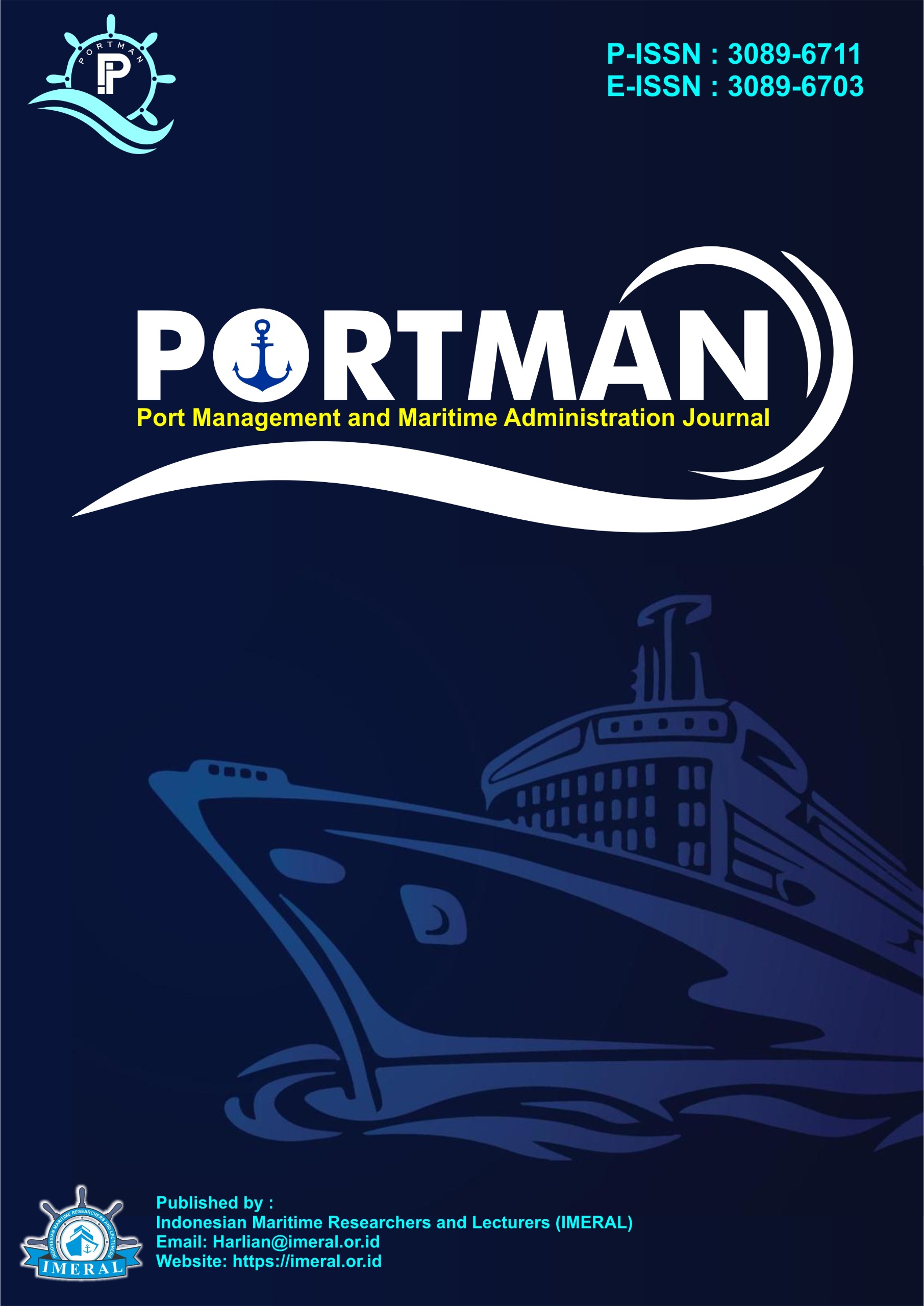Indonesia’s Response to Sovereignty Threats in the Natuna Sea under UNCLOS 1982
DOI:
https://doi.org/10.65428/portman.v1i2.18Keywords:
ASEAN, International Maritime Law, Nine-Dash Line, North Natuna Sea, UNCLOS 1982Abstract
This region faces significant legal and geopolitical challenges due to the maritime conflict in the South China Sea, particularly China's unilateral claims over vast areas based on the Nine-Dash Line. This essay evaluates the direct impact of China's claims on Indonesia's sovereign rights, particularly in the North Natuna Sea, while critically examining the legitimacy of those claims in the context of the United Nations Convention on the Law of the Sea (UNCLOS) 1982. It is clear from legal precedents such as the 2016 ruling of the Permanent Court of Arbitration (PCA) that the Nine-Dash Line is baseless under UNCLOS, which rejects historical claims as a legitimate basis for maritime rights. China's claimed maritime borders have included portions of Indonesia's Exclusive Economic Zone (EEZ), which has resulted in frequent incursions by Chinese coast guard and fishing vessels. This has put Indonesia's maritime sovereignty, national security, and marine-based economy at risk. Indonesia has responded with a multi-pronged approach that includes deploying maritime forces to exert sovereignty over the disputed waters, strengthening domestic law in accordance with UNCLOS, and submitting diplomatic protests to the UN. Additionally, Indonesia is still pushing through ASEAN procedures for a regional code of conduct that is legally obligatory. The results highlight the international legal foundation of Indonesia's legal and policy responses and uphold UNCLOS's dominance as the main legal framework for maritime governance and dispute settlement in the Indo-Pacific area.
References
Aulawi, M. H., & Edwina, Y. A. (2023). South China Sea dispute related to Indonesia's exclusive economic zone north of the Natuna Islands, Riau Islands Province. Justice Forum, 16(1), 1–14.
Beckman, R. C. (2015). The Philippines v. China case and the South China Sea disputes. In T. T. C. L. & H. D. Phan (Eds.), Territorial disputes in the South China Sea: Navigating rough waters (pp. 54–65). London: Palgrave Macmillan UK.
Buzan, B., & Waever, O. (2003). Regions and powers: The structure of international security (Vol. 91). Cambridge University Press.
CSIS Indonesia. (2020). Maintaining the sovereignty of the Natuna Sea: Challenges of diplomacy and defense. Center for Strategic and International Studies. https://www.csis.or.id
Djaria, A., & Seniwati, S. (2025). Maritime cooperation between Indonesia and China in South China Sea. WISSEN: Jurnal Ilmu Sosial dan Humaniora, 3(1), 108–128.
Fernandes, I., Daulay, Z., Ferdi, F., & Delfiyanti, D. (2021). Status of Indonesia's sovereign rights in the North Natuna Sea conflict area: Consequences of China's nine-dash line claim. Linguistics and Culture Review, 5(S1), 1775–1783.
Irsyad, M. G., & Khanif, A. (2023). Criticize the legality of the People’s Republic of China claims the nine dash line under international law. The Indonesian Journal of International Clinical Legal Education, 5(3), 293–332.
Kompas. (2020, January 1). Complete explanation of the Natuna dispute: Indonesia vs China at sea. https://www.kompas.com/global/read/2020/01/01/070000270/penjelasan-lengkap-kisruh-natuna-indonesia-vs-china-di-laut
Kompas. (2025, March 1). Natuna maritime conflict: A challenge for national security. https://www.kompas.id/baca/polhuk/2025/03/01/konflik-maritim-natuna-tantangan-bagi-keamanan-nasional
Law of the Republic of Indonesia Number 17 of 1985 concerning the ratification of the United Nations Convention on the Law of the Sea. (1985). https://peraturan.bpk.go.id/Home/Details/47111/uu-no-17-tahun-1985
Ministry of Foreign Affairs of the Republic of Indonesia. (2021). Indonesia's statement on the claims of the South China Sea. https://kemlu.go.id
Ndi, G. K. (2016). Philippines v China: Assessing the implications of the South China Sea arbitration. Australian Journal of Maritime & Ocean Affairs, 8(4), 269–285.
Permanent Court of Arbitration. (2016). The South China Sea Arbitration (The Republic of the Philippines v. The People’s Republic of China). https://pca-cpa.org/en/cases/7/
Pradana, R. F. B. A. (2017). The legal consequences of China's nine dash line claim on Indonesia's sovereign rights in the Natuna Archipelago Waters (Especially Natuna Regency) according to UNCLOS 1982. [Unpublished manuscript], 1–10.
Rossiana, Y. S. (2022). The South China Sea dispute: Code of conduct implementation as the dispute settlement. Journal of Defense Diplomacy, 8(1).
Shaw, M. N. (2017). International law. Cambridge University Press.
Silviani, N. Z. (2019). Interpretation of international agreements related to historical rights in UNCLOS 1982: Case study: South China Sea dispute between the People's Republic of China v. Philippines and the Chagos Archipelago dispute between Mauritius v. United Kingdom. Selat Journal, 6(2), 154–171.
Stephens, T. (2016). International law of the sea: China's claims dashed in South China Sea arbitration. LSJ: Law Society of NSW Journal, (25), 73–75.
United Nations. (1982). United Nations Convention on the Law of the Sea (UNCLOS). https://www.un.org/depts/los/convention_agreements/texts/unclos/unclos_e.pdf





